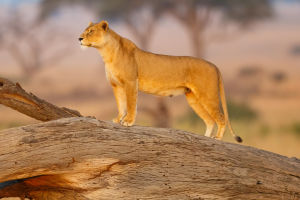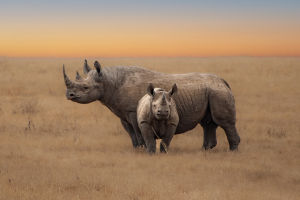Grey wolves, one of the most widely distributed land mammals in the world, play a crucial role in maintaining the health of ecosystems. From North America to Europe and Asia, wolves can thrive in diverse habitats, but many populations are facing serious threats due to human activities.
To better understand these magnificent animals, here are 10 fascinating facts about grey wolves:
1. Grey Wolves Are the Most Common Wolf Species
The grey wolf (Canis lupus) is the most widespread wolf species, with over 30 subspecies spread across North America, Europe, and Asia. Wolves vary in size, fur color, and behavior, with the Arctic wolf being pure white and the Mexican wolf being one of the most endangered.
2. Wolves Are Highly Social Creatures
Wolves are known for their tight-knit family units, called packs. They mate for life, and the pack is typically led by the dominant male and female pair. Social behaviors like grooming and playing reinforce bonds within the pack, ensuring survival.
3. The Alpha Myth Has Been Debunked
Contrary to popular belief, wolf packs are not ruled by a single dominant “alpha” male or female. Instead, the pack is typically led by a monogamous pair. Research shows that wolf packs operate more like a family, where older offspring may leave once they are mature, rather than fighting for dominance.
4. Wolves Use Dens to Rear Their Young
Wolves often return to the same den year after year to raise their pups. These dens, which can be in rock crevices or abandoned animal burrows, offer a safe and secluded place for pups to grow.
5. Wolves Mate for Life
Once wolves find a mate, they stay together for life. They are devoted to each other, and their bond is vital to the pack’s cohesion. The breeding pair is usually responsible for leading the pack and making decisions about where to hunt.
6. Wolves Have an Impressive Range
Wolves are capable of covering vast distances, with some traveling up to 50 kilometers (30 miles) in a single day. Their natural range once spanned much of the Earth’s landmasses, from North America to Eurasia.
7. Wolves Are Apex Predators
As apex predators, wolves play a key role in maintaining the balance of their ecosystems. By hunting large herbivores like moose and deer, they help regulate populations of other species, preventing overgrazing and ensuring plant diversity.
8. Wolves Don’t Actually Howl at the Moon
Despite popular myths, wolves do not howl at the moon. Howling is an important form of communication, allowing wolves to stay in contact with their pack members over long distances, especially during hunting or territorial defense.
9. Wolves Are Excellent Hunters
Wolves are highly skilled hunters, relying on both their physical strength and intelligence. They work together to take down large prey, with each wolf playing a specific role in the hunt.
10. Wolves Are Facing Threats
Unfortunately, despite their adaptability and ecological importance, wolves are under threat from habitat destruction and human persecution. Many populations have been pushed to the brink of extinction, and wolves continue to face challenges from poaching and trophy hunting.
Protecting wolves is essential for preserving the health of ecosystems worldwide, as they play a pivotal role in maintaining biodiversity and ecosystem balance.
Wolves are an integral part of nature, and understanding these amazing creatures is the first step toward ensuring their protection for generations to come.
Grey Wolf Facts: also GRAY WOLF facts 🐺 Animal Fact Files
Video by Animal Fact Files


